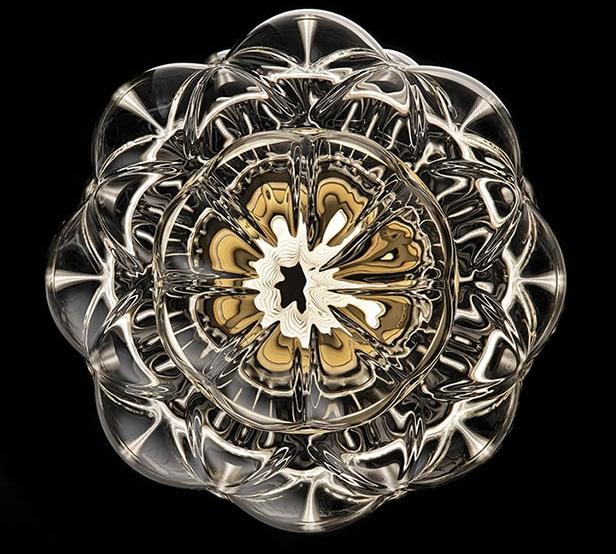For more than 700 years, Murano-based Barovier&Toso has focused its artistic efforts on safeguarding the art of glass. The company recently collaborated with Luca Nichetto of Nichetto Studio on two new collections of lamps and pendants with a contemporary accent. A+A interviewed Daniela Sarracco, marketing and communication manager for Barovier&Toso, as well as Luca Nichetto, via email:
Some background on the company?
Daniela Sarracco: Since our founding in 1295, through many generations and pivotal historical events, the company has adapted to change with grace and uncompromising quality. Today, we continue to celebrate our rich heritage, while bringing Murano glass-blowing tradition into the future, embracing the responsibility of this mission and doing it justice. This collaboration with Luca Nichetto/ Nichetto Studio—our first together— is truly emblematic of this. When it comes to developing and launching new products, we work on two different tracks: on the one hand we have our design department developing new designs every year, on the other, we have our collaborations with well-known designers which help us re-interpret our traditional savoir-faire to create innovative designs with a nod to the past. Luca was born in Murano where his artistic talents were cultivated by the surrounding glassmaking industry, which also employed members of his family, so he truly understands where we come from and the language of glass. When we approached Luca Nichetto | Nichetto Studio for this project, we asked the team to focus on the word innovation, to participate in more than a stylistic exercise focusing primarily on the process and production behind the novel design.
What is the Vallonné collection?
Luca Nichetto: Our first collaboration, Vallonné and Vallonné Opale exemplify Barovier&Toso’s steady pursuit of combining old-world heritage and innovation. Aptly named, Vallonné—or “hilly” in French—references the soft curves sculpted by nature, perfectly describing the organic contrast between the ribbing and hollows of the new collections—elements that accentuate their three-dimensional forms. The emphasis placed on the sculptural characteristics of the Venetian Crystal underscores the true essence of glassblowing: the crystallization of unprecedented geometric moments.
The Vallonné Opale collection?
Luca: Both collections are marked by a symmetrical overlay of ballooning, clear and cloudy volumes with harmonious proportions. While Vallonné features transparent crystal containing a tapered core of glass that conceals the light source, Vallonnè Opale is made with the jacketing technique, with an opaline, milky external effect that spreads light evenly.
The design intent here?
Luca: This has been a very satisfying collaboration, because we were not asked to engage in a stylistic exercise, but to make innovation the focal point of the project. The company has taken risks, leaving the possibility of wide-ranging experimentation wide open and also by rethinking some of the main tenets of the tradition. The result has been a brilliant synergy.
How does modern technology affect their design?
Luca: The mouth-blown, handcrafted nature of Venetian crystal specific to Murano and to the Barovier&Toso furnaces is legendary and has remained unchanged for years. You might notice the Vallonné is reminiscent of a traditional Venetian lantern, but a big and significant difference is the absence of the cage trapped within the glass—a structure typically utilized in the formation of the traditional lamp that also serves to help keep its shape. The challenge was finding a way to achieve these two elements without the cage. In order to do this, we had to rethink the processes of production and the blowing of glass that are historically untouchable in Murano. We had to break the rules. The result is an invention that just doesn’t exist on the market.
The material palette?
Luca: Venetian crystal and metal suspension cords.
The color palette?
Luca: The metallic finishes are available in black chrome and honey bronze. Crystal, indigo, periwinkle, and sand are the color options we chose for the glass of Vallonné, alongside jacketed white for Vallonné Opale. We developed this palette of hues to give the collections multiple personalities: classic, discreet, eccentric, for combinations that range all the way to Pop effects.
We have heard that some production in Murano has slowed and even stopped because of a shortage of natural gas there. Is this accurate? If so, how has it affected your production?
Daniela: We ushered in 2022 on the heels of a highly successful year, after having achieved our growth objectives set for 2021. Production has not faltered despite the evolving conditions and last year we recorded the highest volume of orders in the last 15 years, with a 30% increase in turnover compared to 2020.
[slideshow id=2437]

